Impact of Medicare and Medicaid Quality Initiative on Healthcare Organizations Presentation
Introduction
- During the past 30 years health care costs in the United States have risen from 4 to 14 percent (Fries, et al., 1993).
- Improvement of health care services while ensuring low costs requires the following measure taken:
- High-cost pharmaceutical management;
- Management of chronic care;
- Management of drop-in appointments;
- Primary prevention;
- Health maintenance;
- Hospital contracting;
- Medical error reduction (Leatherman, et al., 2003).
The Quality Initiative
The Quality Initiative was inaugurated by the Medicare and Medicaid health care services in 2001 and launched nationally in 2002 encompassing nursing homes, hospitals, physicians, home health care providers and other health services in an effort to improve health care and lower costs (Sultz & Young, 2008).
We will write a custom essay on your topic
811writers online
Programs in the Quality Initiative
- Quality Monitoring to collect, analyze and interpret data to improve the quality of health care given to its benefactors.
- Pay for Performance a system which rewards doctors, hospitals and health care providers for their efficiency.
- The Hospital Compare Website. A website which tracks the performance of hospitals based on 4 common conditions and 20 criteria.
- Non payment for Hospital acquired infections and reductions in treatment payment for problematic hospital events (Sultz & Young, 2008).
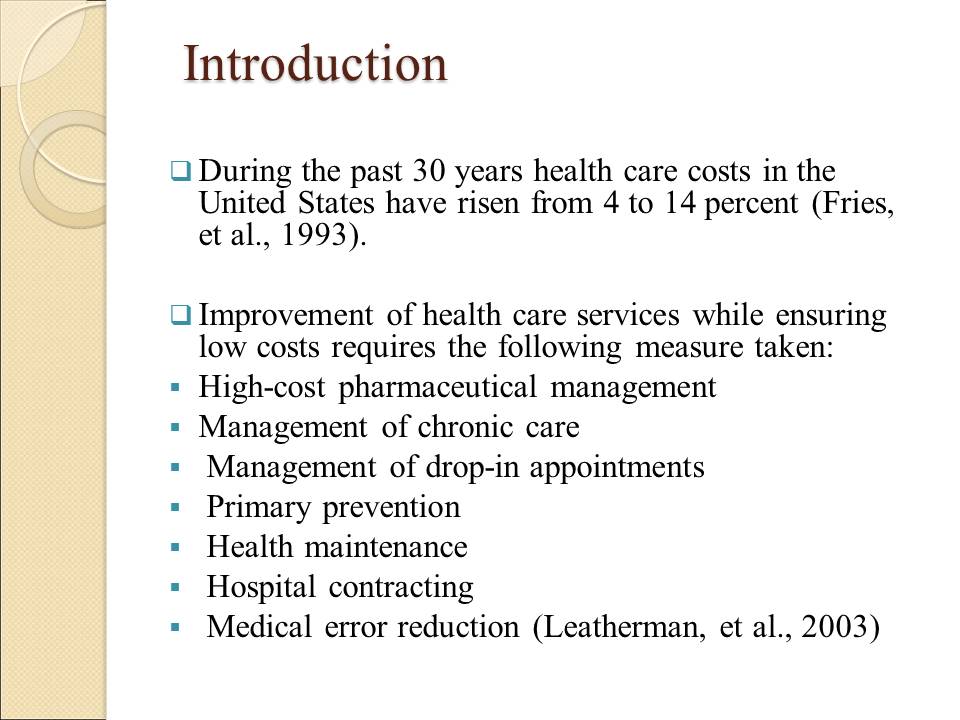
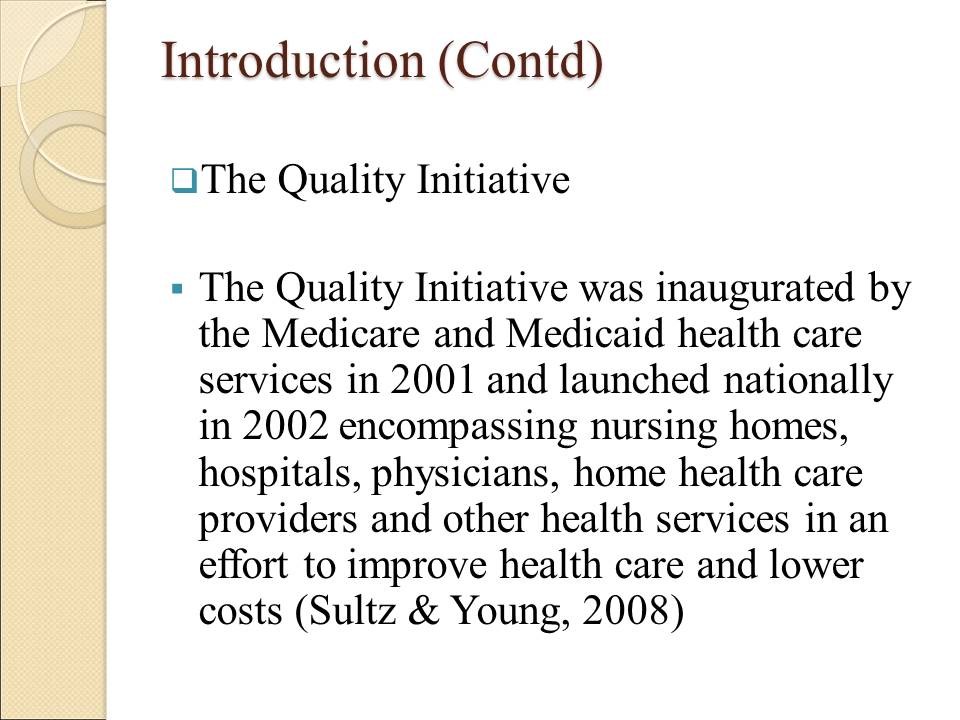
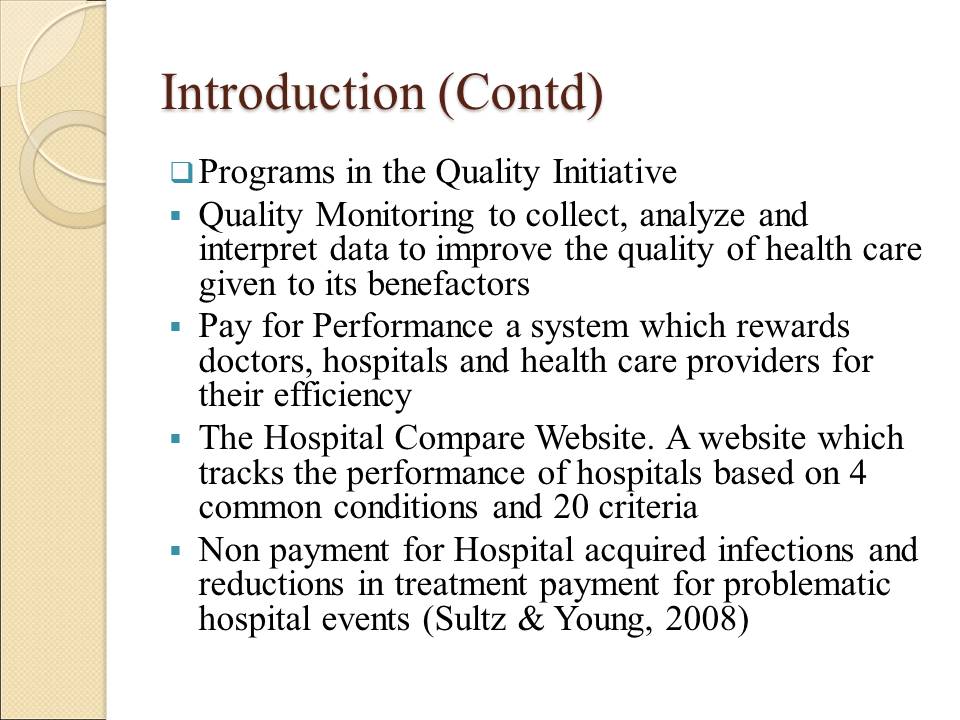
Objective of the Initiative
- To encourage hospitals and health care providers to improve the quality of health care.
- To create incentives for the improvement of healthcare and support public accountability.
- To work with other health care organizations to set the standards of hospital quality measures and voluntary reporting.
- To ensure ongoing regulation by state surveying agencies.
- Rewards for performance and continued improvement through community interactions and increase in knowledge and resources (Centers for Medicare and Medicaid Services, 2005).
- Ensure that the quality initiative meets the following ethical requirements:
- Justify the costs and risks of investment in terms of health care;
- Structured to achieve its goals;
- Fairly distribute responsibilities and burdens;
- Limit risks and maximize benefits;
- Respect the patients and ensure they are informed of the risks of receiving this form of health care so that they can make informed decisions and ensure accountability (Lynn, et al., 2007).
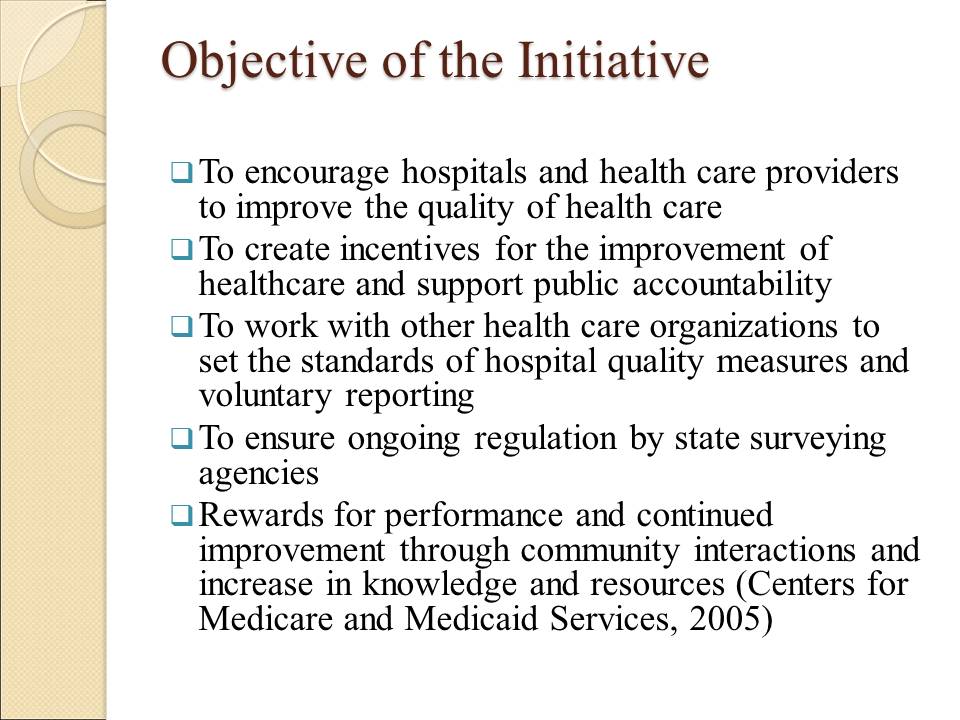
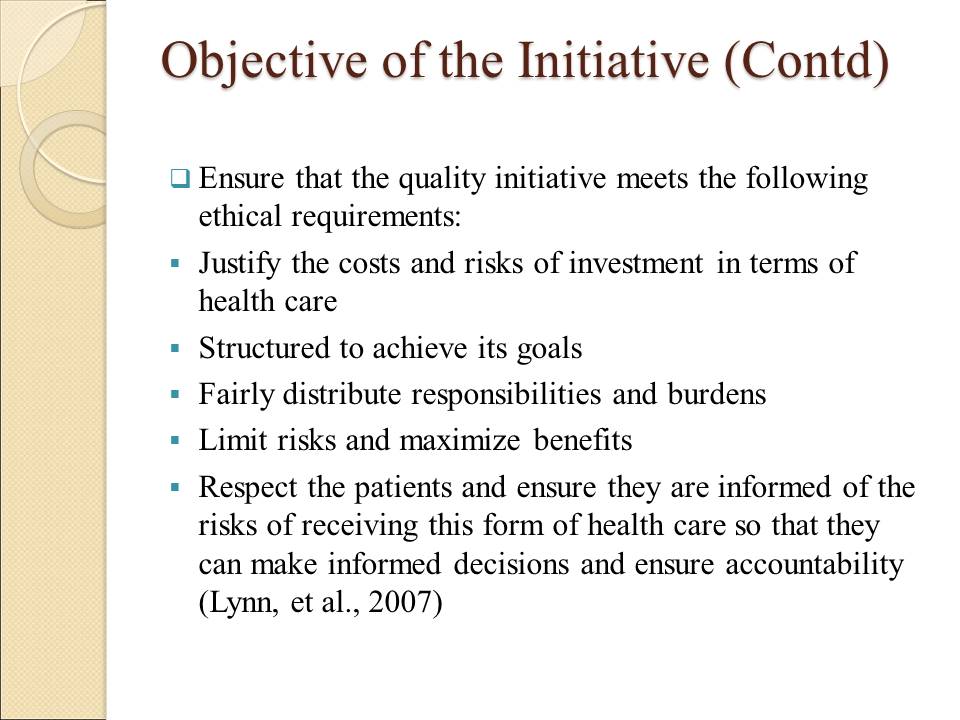
Impact on health care organizations
- A study was taken and calculated to predict average costs for 3,794 hospitals in the United States in 2009.
- There is a relationship between the lower risk adjusted costs and low nurse ratio in hospitals with increased profits and larger number of Medicare beneficiaries.
- The number of hospitals exhibiting low costs also exhibited low performance in the treatment of acute myocardial infarction and chronic heart failure (Jha, Orav, Dobson, Book, & Epstein, 2009).
- The 30 day mortality rates were comparable for high cost and low cost hospitals in terms of Acute Myocardial Infarction and Pneumonia.
- There is no evidence that low cost hospitals provide a better level of care. In fact they had slightly worse performance according to pre decided Order this paper